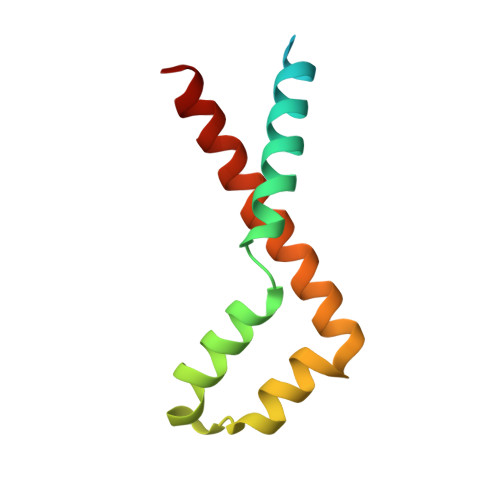The Crystal Structure of Lambda-Gam Protein Suggests a Model for Recbcd Inhibition.
Court, R.I., Cook, N., Saikrishnan, K., Wigley, D.B.(2007) J Mol Biol 371: 25
- PubMed: 17544443
- DOI: https://doi.org/10.1016/j.jmb.2007.05.037
- Primary Citation of Related Structures:
2UUZ, 2UV1 - PubMed Abstract:
In Escherichia coli, RecBCD processes double-stranded DNA breaks during the initial stages of homologous recombination. RecBCD contains helicase and nuclease activities, and unwinds and digests the blunt-ended DNA until a specific eight-nucleotide sequence, Chi, is encountered. Chi modulates the nuclease activity of RecBCD and results in a resected DNA end, which is a substrate for RecA during subsequent steps in recombination. RecBCD also acts as a defence mechanism against bacteriophage infection by digesting linear viral DNA present during virus replication or resulting from the action of restriction endonucleases. To avoid this fate, bacteriophage lambda encodes the gene Gam whose product is an inhibitor of RecBCD. Gam has been shown to bind to RecBCD and inhibit its helicase and nuclease activities. We show that Gam inhibits RecBCD by preventing it from binding DNA. We have solved the crystal structure of Gam from two different crystal forms. Using the published crystal structure of RecBCD in complex with DNA we suggest models for the molecular mechanism of Gam-mediated inhibition of RecBCD. We also propose that Gam could be a mimetic of single-stranded, and perhaps also double-stranded, DNA.
Organizational Affiliation:
Cancer Research UK Clare Hall Laboratories, Blanche Lane, South Mimms, Hertfordshire EN6 3LD, UK.














